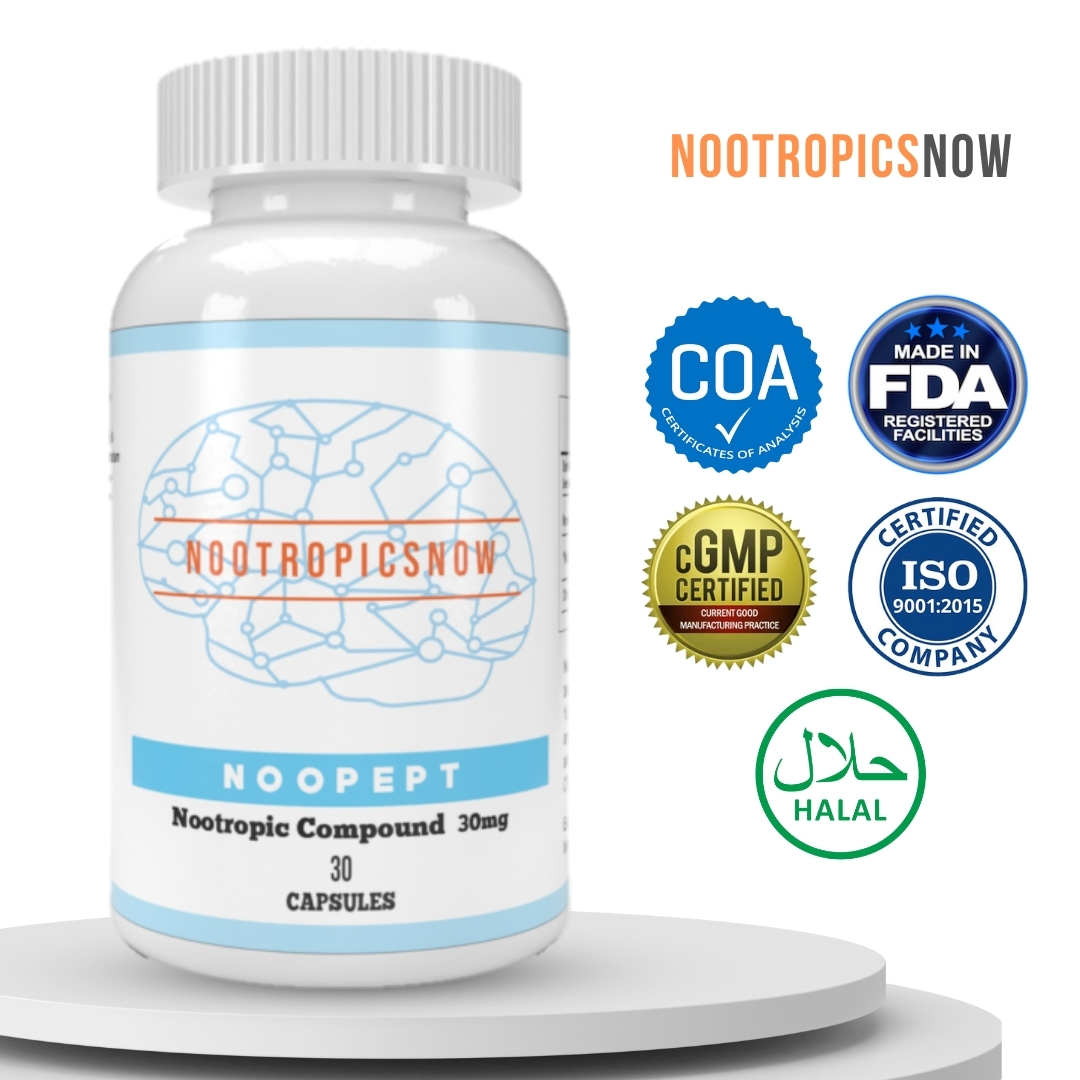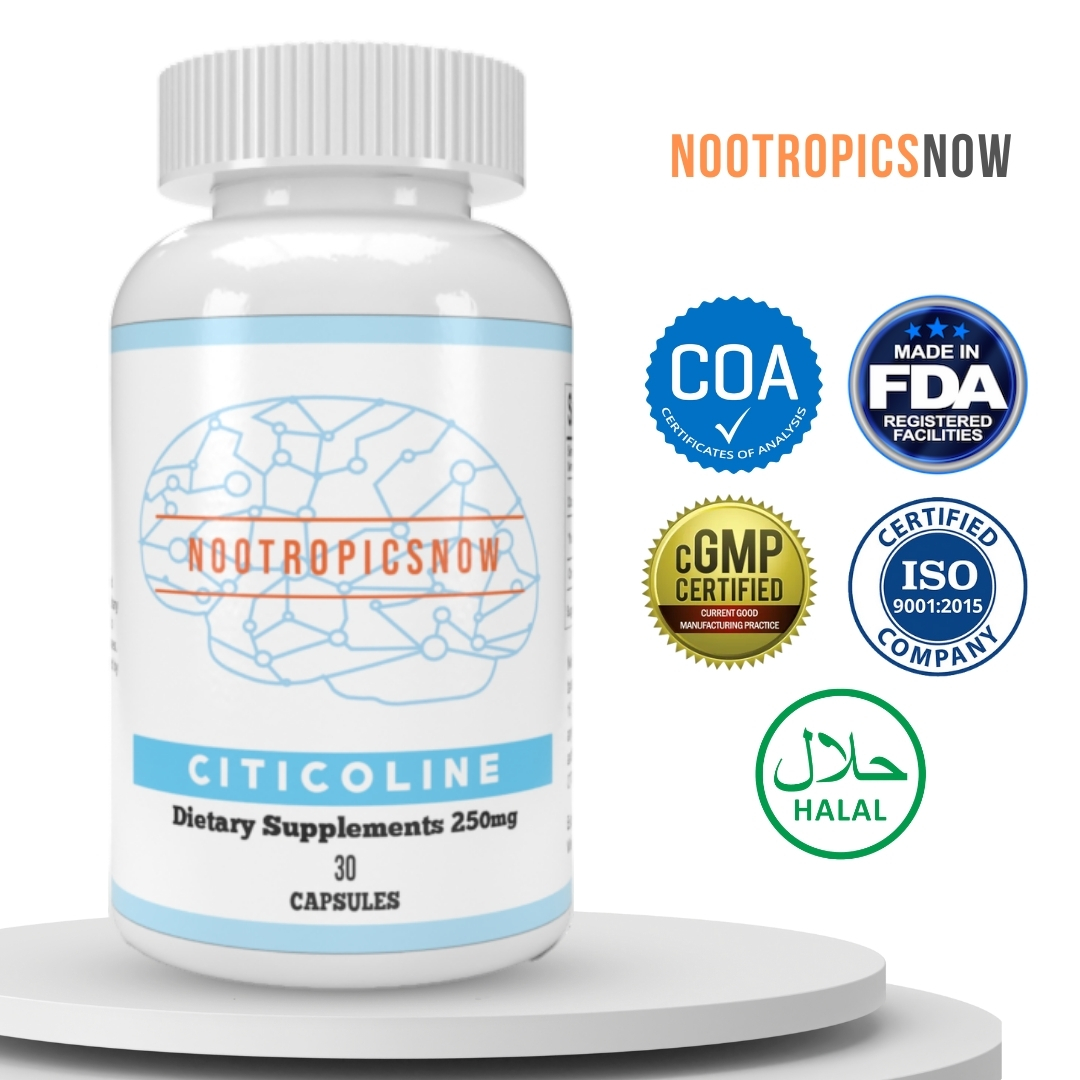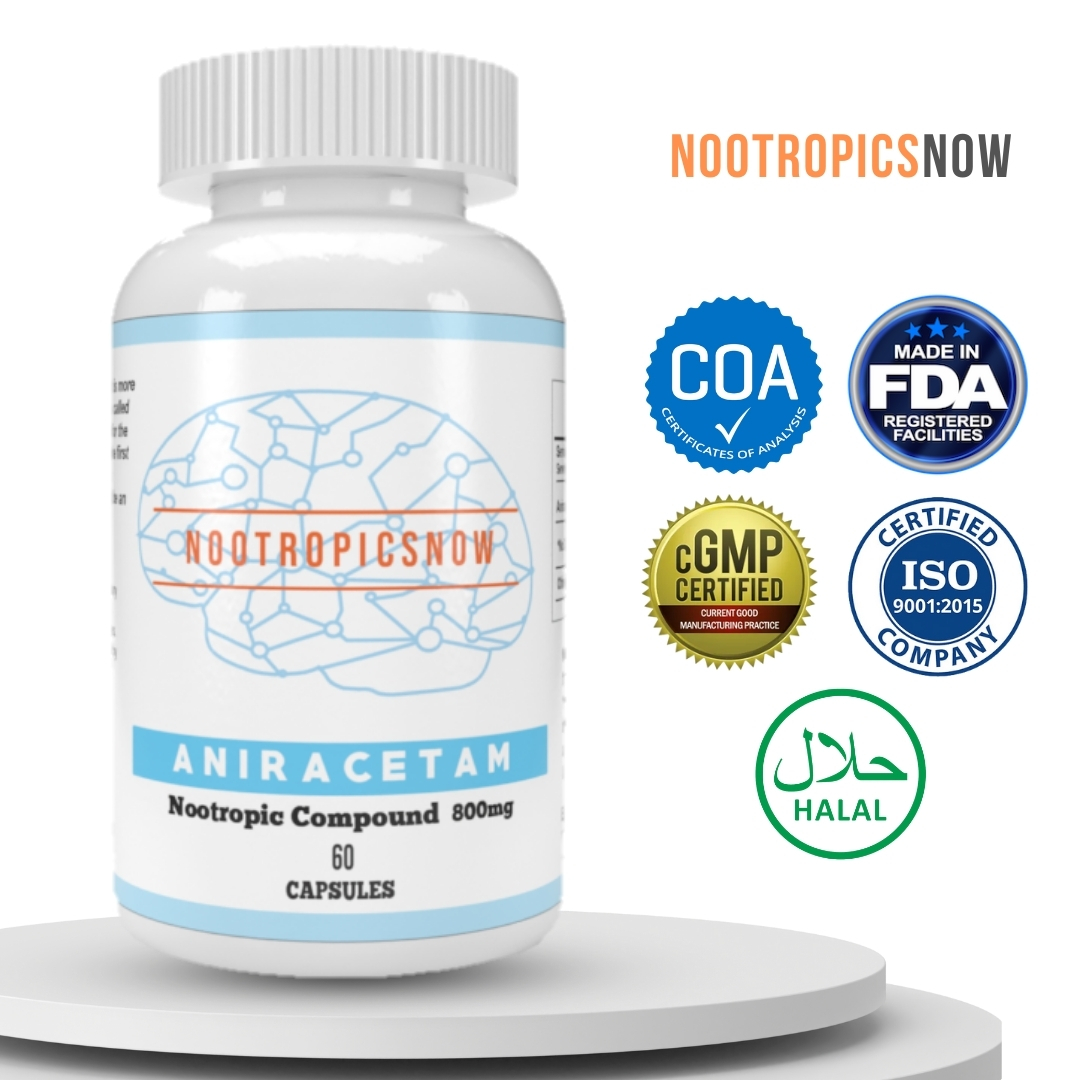Noopept: What It Is, Benefits, & Uses

What is Noopept?
Noopept, a popular synthetic nootropic, is gaining attention for its potential cognitive-enhancing effects. Formally known as N-phenylacetyl-L-prolylglycine ethyl ester, it stands out in the realm of cognitive enhancers due to its unique structure and claimed benefits. This peptide-derived nootropic is increasingly being explored by individuals aiming to boost memory, focus, and overall cognitive function. But what exactly is Noopept, and how does it work?
Unveiling Noopept: A Closer Look
Noopept is essentially a synthetic ethyl ester of a naturally occurring dipeptide found in the brain called cycloprolylglycine. Created by Russian scientists in the mid-1990s, it was initially developed to treat cognitive impairments. Unlike some other nootropics, Noopept boasts a relatively small molecular structure, theoretically allowing it to cross the blood-brain barrier with ease. This efficient transport to the brain is often cited as a reason for its rapid onset of action. Its development stems from extensive research into piracetam, a well-established nootropic, aiming to create a compound with potentially enhanced potency and efficacy.
The Science Behind Noopept: How it Works
While the precise mechanisms of action are still being investigated, research suggests several key pathways through which Noopept exerts its effects. One of the most compelling is its influence on neurotrophins, specifically Brain-Derived Neurotrophic Factor (BDNF) and Nerve Growth Factor (NGF). These neurotrophins are crucial for neuronal growth, survival, and plasticity, impacting learning, memory, and overall brain health.
Furthermore, Noopept is thought to modulate neurotransmitter systems, primarily those involving glutamate and acetylcholine.
Moreover, antioxidant properties have been attributed to Noopept, offering protection against oxidative stress and free radical damage in the brain. This antioxidant activity is crucial for maintaining neuronal health and preventing age-related cognitive decline.
Key Benefits of Noopept
The claimed benefits of Noopept are wide-ranging, attracting individuals seeking to improve various aspects of cognitive performance. While more robust clinical trials are needed to fully substantiate these claims, user reports and preliminary studies suggest the following potential benefits:
Potential Side Effects and Precautions
Although generally considered safe when used responsibly, Noopept can cause side effects in some individuals. As with any nootropic or supplement, it’s crucial to be aware of these potential adverse effects and take appropriate precautions.
Common side effects can include:
Rare side effects may include:
To minimize the risk of side effects, the following precautions should be taken:
Dosage Guidelines for Noopept
Determining the optimal dosage of Noopept is crucial to experience its benefits while minimizing the risk of side effects. Individual responses can vary, and therefore, a personalized approach is often recommended.
General Dosage Range:
The commonly recommended dosage range for Noopept is 10-30 mg per day. This is typically divided into two or three smaller doses throughout the day.
Starting Dose:
For beginners, it is generally advised to start with a low dose of 10 mg per day, divided into two 5 mg doses taken in the morning and early afternoon. This allows you to assess your individual sensitivity and tolerance to the compound.
Titration:
After a few days, if you tolerate the initial dose well and are not experiencing any adverse effects, you can gradually increase the dosage. Increase by 5 mg increments, monitoring your response carefully.
Maximum Dose:
Most users find that a daily dose of 20-30 mg is sufficient to experience the desired cognitive benefits. It is generally not recommended to exceed 30 mg per day, as higher doses may increase the risk of side effects.
Frequency of Dosing:
Since Noopept has a relatively short half-life, its effects are often felt for a few hours. Therefore, splitting the daily dose into two or three smaller doses throughout the day can help maintain a consistent level of the compound in your system.
Timing of Dosing:
It is usually best to take Noopept in the morning and early afternoon to avoid sleep disturbances. Avoid taking it close to bedtime, as it can interfere with sleep for some individuals.
Cycling:
As previously mentioned, cycling Noopept is often recommended to prevent tolerance and reduce the risk of side effects. A common cycle is 2 weeks on, 1 week off or 1 month on, 1 month off.
Noopept vs. Piracetam: Key Differences
Noopept and piracetam are both popular nootropics, but they differ in several key aspects. Understanding these distinctions can help you decide which compound might be more suitable for your individual needs.
| Feature | Noopept | Piracetam |
|---|---|---|
| —————– | ——————————————— | ——————————————— |
| Potency | Much more potent; effective at lower doses | Less potent; requires higher doses |
| Dosage | 10-30 mg per day | 1600-4800 mg per day |
| Mechanism | Neurotrophin modulation (BDNF, NGF) | Primarily influences acetylcholine |
| Speed of Action | Faster onset of action | Slower onset of action |
| Anxiolytic Effect | May have anxiolytic properties | Generally not known for anxiolytic properties |
| Molecular Structure | Dipeptide derivative | Racetam derivative |
Potency and Dosage: Noopept is significantly more potent than piracetam, meaning that it produces effects at much lower dosages. This is often cited as a benefit, as it requires taking fewer pills or less powder. While piracetam dosages range from 1600-4800 mg per day, Noopept dosages are typically between 10-30 mg per day.
Mechanism of Action: Although both affect cognitive function, their primary mechanisms of action differ. Noopept’s primary influence is on neurotrophins, specifically BDNF and NGF. Piracetam, on the other hand, is believed to primarily influence the acetylcholine system.
Speed of Action: Many users report that Noopept has a faster onset of action compared to piracetam. Some users feel the effects of Noopept within 30 minutes, while piracetam may take several hours or even days to become noticeable.
Anxiolytic Effect: Noopept is often associated with anxiolytic properties, meaning that it can help reduce anxiety. While piracetam is generally considered safe, it is not specifically known for having anxiolytic effects.
Molecular Structure: Structurally, Noopept is a dipeptide derivative, while piracetam is a racetam derivative. This difference in structure may contribute to their different mechanisms of action and effects.
Stacking Noopept with Other Nootropics
Many nootropic users experiment with stacking different compounds to enhance their cognitive effects. Stacking involves combining two or more nootropics to create synergistic effects. When stacking Noopept, it is crucial to choose complementary compounds and monitor your response carefully.
`markdown

View Product
`
Popular Noopept Stacks:
`markdown

View Product
`
`markdown

View Product
`
`markdown

View Product
`
`markdown

View Product
`
Guidelines for Stacking:
The Legal Status of Noopept
The legal status of Noopept varies depending on the country. In some countries, it is classified as a prescription medication, while in others, it is available as a dietary supplement.
Before purchasing or using Noopept, it is essential to check the legal status in your country of residence.
Purchasing High-Quality Noopept
When purchasing Noopept, it is crucial to ensure that you are buying a high-quality product from a reputable source. The nootropics market can be unregulated, and counterfeit or adulterated products may be present.
Tips for Purchasing Noopept:
Concluding Thoughts on Noopept
Noopept is a fascinating and promising nootropic with the potential to enhance cognitive function and protect the brain. Its unique mechanism of action, involving neurotrophin modulation and neurotransmitter system influence, sets it apart from other nootropics. While research on Noopept is ongoing, preliminary studies and user reports suggest that it can improve memory, learning, focus, and overall cognitive performance.
However, it is crucial to approach Noopept with caution and use it responsibly. Be aware of the potential side effects, start with a low dose, and monitor your response carefully. Consult with a healthcare professional before using Noopept, especially if you have any underlying health conditions or are taking medications.
By following these guidelines, you can explore the potential benefits of Noopept while minimizing the risk of adverse effects and ensuring a safe and effective nootropic experience. The world of cognitive enhancement is constantly evolving, and staying informed and making informed decisions is key to unlocking your cognitive potential.
What is Noopept?
Noopept (N-Phenylacetyl-L-prolylglycine ethyl ester), stands as a prominent figure within the world of nootropics. Developed in Russia, it has gained considerable traction among those seeking cognitive enhancement. This synthetic peptide derivative is often lauded for its potential to improve memory, focus, and overall mental performance. Let’s delve into the intricacies of Noopept, exploring its mechanism of action, benefits, potential side effects, dosage, and legal status.
Unveiling Noopept: A Synthetic Nootropic
Noopept is a synthetic molecule designed to enhance cognitive functions. It belongs to the racetam family of nootropics, even though its chemical structure differs significantly from the original racetam, piracetam. Despite the structural differences, Noopept shares some effects with piracetam and other racetams, albeit often at much lower dosages. The substance is known under different names, including GVS-111 and N-phenylacetyl-L-prolylglycine ethyl ester. Its primary use is to improve cognitive abilities.
The History Behind Noopept
Developed in Russia during the 1990s by JSC LEKKO Pharmaceuticals, Noopept quickly gained recognition for its cognitive-enhancing properties. It was initially prescribed to treat cognitive decline stemming from various conditions, including brain injuries and cerebrovascular insufficiency. Its popularity has since extended beyond medical applications, now widely used as a cognitive enhancer by healthy individuals looking to boost their mental capabilities. Research in 2024 continues to investigate its therapeutic potential in neurological disorders.
Mechanism of Action: How Noopept Works
The precise mechanism by which Noopept exerts its cognitive effects remains an area of ongoing research. However, scientists have proposed several key actions:
Key Cognitive Benefits of Noopept
The appeal of Noopept lies in its potential to enhance various cognitive functions. Users often report experiencing the following benefits:
Noopept Dosage: Finding the Right Amount
Determining the appropriate dosage of Noopept is crucial to achieving optimal benefits while minimizing potential side effects. The typical recommended dosage ranges from 10 to 30 mg per day, divided into two or three doses. Many users start with a lower dose (10 mg twice daily) and gradually increase it as needed. It’s important to listen to your body and adjust the dosage based on your individual response. Taking Noopept sublingually (under the tongue) can enhance absorption and potentially reduce the required dosage.
Potential Side Effects and Safety Considerations
While Noopept is generally well-tolerated, some users may experience side effects. Common side effects include:
To minimize the risk of side effects, it’s important to start with a low dosage and gradually increase it. Ensuring adequate choline intake through diet or supplementation can also help prevent headaches and other side effects. If you experience any persistent or bothersome side effects, discontinue use and consult with a healthcare professional.
Stacking Noopept: Combining with Other Nootropics
Noopept is frequently used in combination with other nootropics to enhance its cognitive effects. Common stacks include:

View Product
When stacking nootropics, it’s essential to research each compound thoroughly and start with low dosages to assess your individual response.
Noopept: Legal Status and Regulations
The legal status of Noopept varies depending on the country. In some countries, like Russia, Noopept is classified as a pharmaceutical drug and requires a prescription. In other countries, it is available as a dietary supplement and can be purchased without a prescription. The regulatory landscape surrounding nootropics can be complex and subject to change, so it’s always recommended to check the local regulations in your area before purchasing or using Noopept.
Purchasing Noopept: Important Considerations
When purchasing Noopept, it’s crucial to select a reputable vendor to ensure product quality and authenticity. Look for vendors that provide third-party testing and certificates of analysis to verify the purity and potency of their products. Avoid purchasing Noopept from unreliable sources, as counterfeit or contaminated products can pose serious health risks. Online forums and communities dedicated to nootropics can provide valuable recommendations and reviews of different vendors.
Scientific Research and Clinical Trials
While anecdotal evidence and user reports suggest that Noopept has cognitive-enhancing properties, it is essential to consider the available scientific evidence. Several studies have investigated the effects of Noopept on cognitive function in both animals and humans.
Animal studies have shown that Noopept can improve memory, learning, and attention in rodents. Human studies have also yielded promising results, with some studies suggesting that Noopept can improve cognitive function in individuals with mild cognitive impairment or age-related cognitive decline. However, more research is needed to confirm these findings and to fully understand the long-term effects and safety of Noopept.
Noopept vs. Other Nootropics: A Comparative Analysis
Noopept is often compared to other nootropics, particularly those in the racetam family. While it shares some similarities with piracetam and other racetams, it also has distinct characteristics.
One key difference is potency. Noopept is significantly more potent than piracetam, meaning that a much lower dose is required to achieve similar effects. This higher potency can be an advantage for some users, as it reduces the amount of substance that needs to be consumed.
Another difference is the subjective experience. Some users report that Noopept provides a more focused and stimulating effect compared to piracetam, while others prefer the milder and more generalized cognitive enhancement of piracetam. Ultimately, the best nootropic for an individual will depend on their personal preferences and cognitive goals.
Beyond Cognitive Enhancement: Potential Therapeutic Applications
While primarily known for its cognitive-enhancing properties, Noopept is also being investigated for its potential therapeutic applications in neurological disorders.
Some research suggests that Noopept may have neuroprotective effects that could be beneficial in preventing or slowing the progression of Alzheimer’s disease and other neurodegenerative conditions. It is also being explored as a potential treatment for anxiety and depression, due to its anxiolytic and mood-boosting effects.
However, it is important to note that these therapeutic applications are still under investigation, and more research is needed to confirm the efficacy and safety of Noopept in these conditions.
The Future of Noopept Research
Research on Noopept is ongoing, with scientists exploring its mechanisms of action, cognitive effects, and potential therapeutic applications. Future research may focus on:
Conclusion: Noopept – A Promising Cognitive Enhancer
Noopept represents a promising avenue for those seeking cognitive enhancement and neuroprotection. Its multifaceted mechanism of action, potential benefits, and relatively low risk of side effects make it an attractive option for many individuals. However, it is essential to approach Noopept with caution, conduct thorough research, and consult with a healthcare professional before use. By understanding the intricacies of Noopept and its potential effects, users can make informed decisions about whether it is the right choice for their individual needs and cognitive goals. Keep in mind, that while nootropics such as Noopept can have a positive influence, a balanced lifestyle including a healthy diet, regular exercise, and adequate sleep remains paramount for optimal cognitive function and overall well-being.




